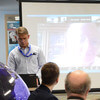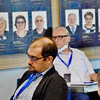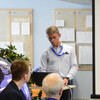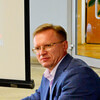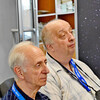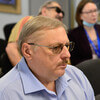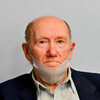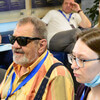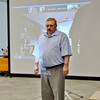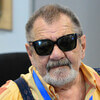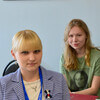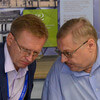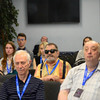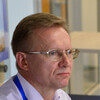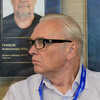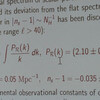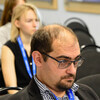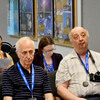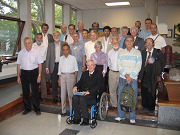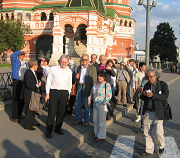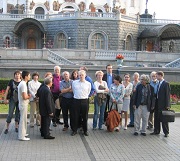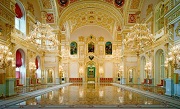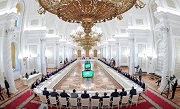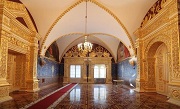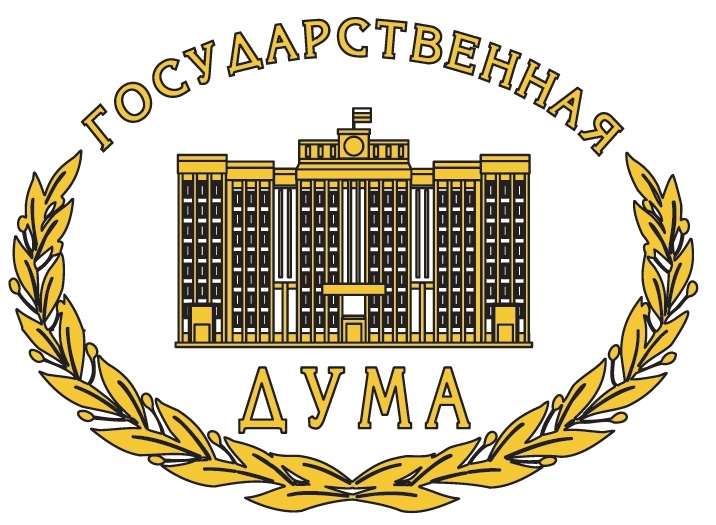



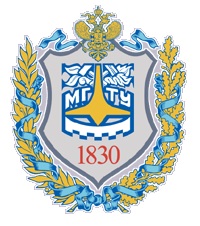
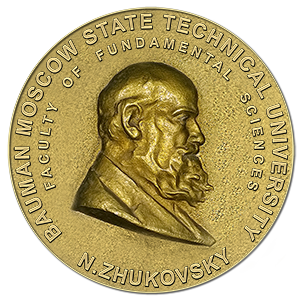
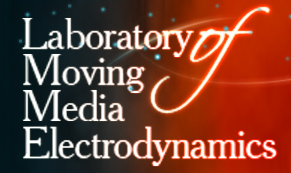
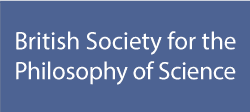
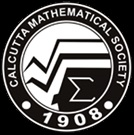

Dear colleagues!
Information about new PIRT conferences (since 2021), is posted on the website pirt.bmstu.ru
Bauman Moscow State Technical University
5, 2-nd Baumanskaya street, Moscow, 105005 Russia
–•–•II International Meeting
Physical Interpretations of Relativity Theory - 2021
05-09 July 2021
Moscow, Rubtsovskaya nab., 2/18- Video
- Photos
- Conference Committee
- Invited Speakers
- Important dates
- Support
- Informing Letters
- Participants
- General program
- Scientific program
- Poster Papers
- List of talks, including plenary and poster
- –Рbstracts
- BMSTU
- Laboratory Building of BMSTU
- Department of Physics
- Transport to BMSTU
- Accommodation
- Registration Fee
- Auditorium
- Permission, visa
- Invitation
- Cultural program
- Meal
- Translation (Interpretation)
- Moscow PIRT Proceedings
- Format for abstracts and papers
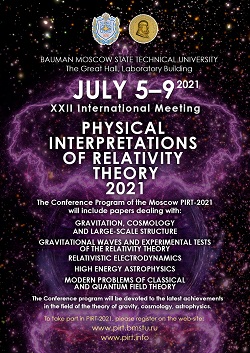
Video
Photos PIRT-2021
Conference Committee
- Prof. Anatoly A. Aleksandrov, Bauman MSTU, Moscow, Russia (University rector)
- Prof. Vladimir O. Gladyshev, Bauman MSTU, Moscow, Russia (Chairman)
- Member of RAS, Prof. Alexei A. Starobinsky, Landau Institute for Theoretical Physics, Russia (Co-Chairman)
- Member of RAS, Prof. Vladislav I. Pustovoit, Science Technological Center of Unique Instruments of RAS, Moscow, Russia (Co-Chairman)
- Corr.-Member of RAS, Prof. Andrei N. Morozov, Bauman MSTU, Moscow, Russia (Co-Chairman)
Local Committee
- Member of RAS, Prof. Anatoly M. Cherepashchuk, Sternberg Astronomical Institute Moscow Russia
- Corr.-Member of RAS, Prof. Nikolay N. Kolachevsky, P.N. Lebedev Physical Institute of RAS, Russia
- Corr.-Member of RAS, Prof. Nikolay N. Rozanov, Saint Petersburg National Research University of Information Technologies, Mechanics and Optics; Vavilov State Optical Institute
- Prof. Valentin N. Rudenko, Sternberg State Astronomical Institute, Lomonosov Moscow State University, Moscow, Russia
- Prof. Sergey V. Sushkov, Kazan Federal University, Russia
- Prof. Igor V. Fomin, Bauman MSTU, Moscow, Russia
- Prof. Sergey V. Chervon, Ulyanovsk State Pedagogical University, Ulyanovsk, Russia
- Prof. Konstantin A. Postnov, Sternberg State Astronomical Institute Lomonosov Moscow State University, Russia
- Prof. Mikhail V. Sazhin, Sternberg State Astronomical Institute Lomonosov Moscow State University, Russia
- Prof. Boris M. Bolotovskii, Lebedev Physical Institute of RAS, Moscow, Russia
- Prof. Georgy N. Izmailov, Moscow Aviation Institute, Moscow, Russia
International Advisory Council
- Prof. Aroonkumar Beesham, University of Zululand, South Africa
- Prof. Bivudutta Mishra, BITS-Pilani, Hyderabad Campus, India
- Prof. Carlos Romero, Universidade Federal da Paraiba, Brazil
- Prof. John B. Dainton, Liverpool University, Great Britain
- Prof. Barry C. Barish, California Institute of Technology, United States
- Prof. David Blair, University of South Western Australia, Australia
- Prof. Naresh Dadhich, IUCAA, PUNE, India
- Dr. Nicola N. Napolitano, INAF Astronomical Observatory of Capodimonte, Italy
- Prof. Alexander D. Dolgov, Institute of Theoretical and Experimental Physics of RAS, & INFN, Ferrara, Italy
- Prof. Carlo Bradaschia, Istituto Nazionale di Fisica Nucleare INFN, Universita di Pisa, Italy
- Prof. David Shoemaker, MIT LIGO Laboratory, Massachusetts Institute of Technology, Cambridge, U.S.A.
- Prof. Guido Pizzella, Physics Department, University of Rome, Rome, Italy
- Prof. James Hough, Department of Physics and Astronomy, University of Glasgow, Glasgow, U.K.
- Prof. Mairi Sakellariadou, King's College London, University of London, London, Great Britain
- Prof. Nathalie Deruelle, Institut des Hautes Etudes Scientifiques, Bures sur Yvette, France
- Prof. Peter Rowlands, University of Liverpool, Liverpool, United Kingdom
- Prof. Roland Triay, Centre de Physique Theorique CNRS - University de Provence, Marseille, France
- Prof. Rainer Weiss, Massachusetts Institute of Technology, Cambridge, U.S.A.
- Prof. Stanley E. Whitcomb, Physics/LIGO laboratory, California Institute of Technology, Pasadena, U.S.A.
- Dr. Richard Kerner, University Pierre et Marie Curie, France
- Prof. Yee Jack Ng, University of North Carolina - UNC, USA
- Prof. Dadhich Naresh, IUCAA, PUNE, India
- Prof. Mahim R. Adhikari, University of Calcutta, IMBIC, India
- Prof. H.P. Mazumdar, Physics and Earth Sciences Division, Indian Statistical Institute, Kolkata, India
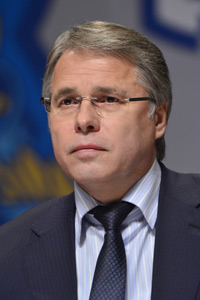
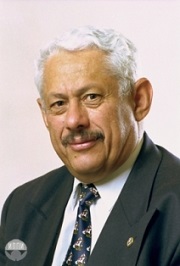
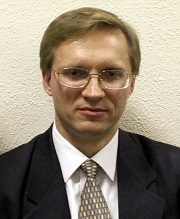
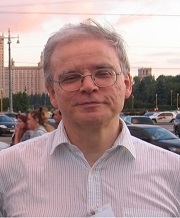
Invited Speakers
- Alcides Garat, Universidad dela Republica, Uruguay
- Alexander Balakin, Kazan (Volga region) Federal University, Russia
- Alexei Starobinsky, Landau Institute for Theoretical Physics, Russia
- Andrei Lebed, University of Arizona, USA
- Antonio –°. Gutierrez-Pineres, Universidad Industrial de Santander, Colombia
- Aroonkumar Beesham, Univversity of Zululand, South Africa
- Bivudutta Mishra, BITS-Pilani, Hyderabad Campus, India
- Carlos Romero, Universidade Federal da Paraiba, Departamento de Fisica, Brazil
- Godwin Ibeh, Nigerian Defence Academy, Faculty of Science, Department of Physics, Nigeria
- Gogfrey Akpojotor, Delta State University, Faculty of Science, Physics Department, Nigeria
- Gy√ґrgy Darvas, Symmetrion, Hungary
- Innocenzo M. Pinto, University of Sannio at Benevento, Italy
- Joann Sydney Rowlands, University of Liverpool, United Kingdom
- Muhammad Sharif, University of the Punjab, Pakistan
- Muhammad Zubair, COMSATS University Islamabad, Pakistan
- Peter Rowlands, University of Liverpool, United Kingdom
- Sergey Chervon, Ulyanovsk State Pedagogical University, Russia
- Sunil Kumar Tripathy, Indira Gandhi Institute of Technology, Sarang, India
- Pradyumn Kumar Sahoo, BITS-Pilani, Hyderabad Campus, India
- Vladimir Vargashkin, Oryol State University, Russia
- Vladislav Pustovoit, Russian Academy of Science, Bauman University, Russia
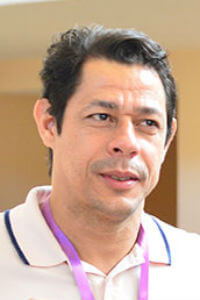
Universidad Industrial de Santander, Colombia
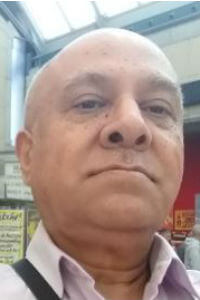
Univversity of Zululand, South Africa
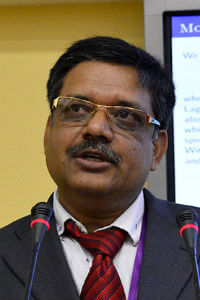
BITS-Pilani, Hyderabad Campus, India
Important dates
Registration вАУ April 15st, 2021
Submission of Abstracts вАУ April 15st, 2021
Submission of Papers вАУ August 1st, 2021
Support
- The State Duma Committee on Education of the Russian Federation
- Department of Physics, University of Liverpool, Great Britain
- Russian Gravitational Society
- Moscow Physical Society
- The International Society on General Relativity & Gravitation
- British Society for the Philosophy of Science
- Calcutta Mathematical Society
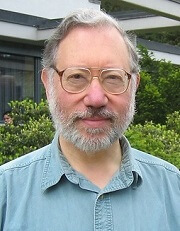
First informing letter
Participants PIRT-2021
- Akhiyarov Vladimir, Kotelnikov Institute of radioengineering and electronics of RAS, Russia
- Abebe Amare, Center for Space Research, South Africa
- Agrawal Amarkumar , BITS-Pilani, Hyderabad Campus, India
- Akpojotor Godfrey , Delta State University, Nigeria
- Alexeyev Stanislav, Sternberg Astronomical Institute, Moscow State University, Russia
- Andrusenko Svetlana, Bauman University, Russia
- Antonyuk Pavel, Moscow State University, Russia
- Avramenko Arkady, Pushchino Radio Astronomy Observatory, Russia
- Babourova Olga, Moscow Automobile and Road Construction State Technical University, Russia
- Balakin Alexander , Kazan (Volga region) Federal University, Russia
- Barroso Bellido Samuel, University of Szczecin, Poland
- Beesham Aroonkumar, University of Zululand, Mangosuthu University of Technology, South Africa
- Behera Dipanjali, Indira Gandhi Institute of Technology, India
- Belonenko Aleksei, Sternberg Astronomical Institute, Moscow State University, Russia
- Berezin Victor, Institute for nuclear research, RAS, Russia
- Bolshakova Katerina, Ulyanovsk State Pedagogical University, Russia
- Brandyshev Petr, Moscow Pedagogical State University, Russia
- Bulyzhenkov Igor, Moscow Institute of Physics and Technology, Russia
- Burinskii Alexander, Nuclear Safety Institute RAS, Russia
- Chaadaev Alexander, Ulyanovsk State Pedagogical University, Russia
- Chaadaeva Tatyana, Ulyanovsk State Pedagogical University, Russia
- Chakraborty Saikat, Yangzhou University, China
- Chernitskii Alexander, St. Petersburg State Chemical Pharmaceutical University, Russia
- Chervon Sergey, Bauman University, Russia
- Darvas Gyuri, Symmetrion, Hungary
- Dokuchaev Vyacheslav, Institute for nuclear research, RAS, Russia
- Dorofeev Vyacheslav, Saint Petersburg State University of Economics, Russia
- Dubey Rajesh Kumar, Lovely Professional University, India
- Emtsova Elena, Sternberg Astronomical Institute, Moscow State University, Russia
- Eroshenko Yury, Institute for nuclear research, RAS, Russia
- Fil'chenkov Michael, Peoples' Friendship University, Russia
- Fisenko Stanislav, Moscow State Linguistic University, Russia
- Fomin Igor, Bauman University, Russia
- Frolov Boris, Moscow Pedagogical State University, Russia
- Garat Alcides, Universidad de la Republica, Uruguay
- García-Farieta Jorge, Center for Theoretical Physics Poland, Poland
- Giri Priyanka, INFN Pisa and University of Paris, Italy
- Gladyshev Vladimir, Bauman University, Russia
- Godonou Inès Salako, EGR/UNA, Benin
- Greco Filippo, Istituto Nazionale di Geofisica e Vulcanologia, Italy
- Gutierrez-Pineres Antonio C, Universidad Industrial de Santander, Colombia
- Guzman Maria-Jose, University of La Serena, Chile
- Ibeh Godwin , Nigerian Defense Academy, Nigeria
- Il'ichov Leonid, Novosibirsk State University, SB RAS, Russia
- Ivanova Inna, Institute for Nuclear Research, RAS, Russia
- Izmailov George, Moscow Aviation Institute, Russia
- Kadam Siddheshwar, BITS-Pilani, Hyderabad Campus, India
- Kamalov Timur, Moscow Institute of Physics and Technology, Russia
- Karimov Ramis, Bashkir State Pedagogical University n.a. M. Akmulla, Russia
- Kassandrov Vladimir, Peoples' Friendship University, Russia
- Khamis Hassan Maher, Assiut University, Egypt
- Khetseva Marina, Moscow Pedagogical State University, Russia
- Kopylov Sergey, Moscow Polytechnic University, Russia
- Koshelev Nikolay, Ulyanovsk State Pedagogical University, Russia
- Kozhedub Aleksei, Saint-Petersburg State University, Russia
- Krasnyy Ivan, The State Research Navigation-Hydrographic Institute, Russia
- Krichevskiy Daniil, Bauman University, Russia
- Kruglov Alexander, Bauman University, Russia
- Krysanov Vladimir, Institute for nuclear research, RAS, Russia
- Kushnir Dmitry, Moscow Pedagogical State University, Russia
- Le Duc Thong , Institute for Computational Science, Vietnam
- Lebed Andrei, The University of Arizona, USA
- Levin Sergey, Moscow Institute for expertise and tests, Russia
- Li Benliang, Southwest jiaotong university, China
- Litvinov D., Bauman University, Russia
- Lohakare Santosh, BITS Pilani, Hyderabad, India
- Luneva L., Bauman University, Russia
- Makarov A., Bauman University, Russia
- Manucharyan Gevorg, Bauman University, Russia
- Mayburov Mayburov, Lebedev Inst. of Physics RAS, Russia
- Meierovich Boris, P.L.Kapitza Institute for Physical Problems, Russia
- Milyukov Vadim, Lomonoscov Moscow State University, Russia
- Mishra Bivudutta, BITS-Pilani, Hyderabad campus, India
- Monakhov Vadim, Saint-Petersburg State University, Russia
- Morozov Andrey,, Bauman University, Russia
- Nikolaev Pavel, Bauman University, Russia
- Okunev Viacheslav, Bauman University, Russia
- Olkhov Oleg, Institute of Chemical Physics, RAS, Russia
- Ozolin Vladimir, Moscow Aviation Institute, Russia
- Pankaj Singh, Delhi University, India
- Pati Laxmipriya, BITS-Pilani, Hyderabad campus, India
- Pavlov Yuri, Institute of Problems in Mechanical Engineering of RAS, Russia
- Petrov Alexander, Sternberg Astronomical Institute, Moscow State University, Russia
- Petrov Vladimir, Logunov Institute for High Energy Physics NRC, Kurchatov Institute, Russia
- Petrova Ludmila, Moscow State University, Russia
- Pilipenko S., Bauman University, Russia
- Pinto Innocenzo M., University of Sannio at Benevento, Italy
- Pokrovsky Yury, National Research Center вАЬKurchatov InstituteвАЭ, Russia
- Poplawski Nikodem, University of New Haven, USA
- Pustovoit Vladislav, Russian Academy of Science, Bauman University, Russia
- Ray Pratik Premadarshi, Vellore Institute of Tecnology- Andhra Pradesh University, India
- Rey Soo-Jong, Quantum ARK Institute; KAST; Seoul National University, Korea
- Romero Carlos, Federal University of Paraíba, Brasil
- Rowlands Joann Sydney, University of Liverpool, United Kingdom
- Rowlands Peter, University of Liverpool, United Kingdom
- Rudenko Valentin, Sternberg Astronomical Institute, Moscow State University, Russia
- Sahoo Pradyumn Kumar, BITS-Pilani, Hyderabad campus, India
- Sharandin Evgenii, Bauman University, Russia
- Sharif Muhammad, University of the Punjab, Pakistan
- Shishanin Andrei, Bauman University, Russia
- Siddheshwar Kadam, BITS-Pilani, Hyderabad campus, India
- Simran Kaur, Delhi Technological University, India
- Siparov Sergey, State University of Civil Aviation, Russia
- Skrabatun A., Bauman University, Russia
- Starobinsky Alexei, Landau Institute for Theoretical Physics RAS, Russia
- Timofeev Vladimir, Saint Petersburg State University of Civil Aviation, Russia
- Toporensky Alexey, Sternberg Astronomical Institute, Moscow State University, Russia
- Trell Erik, University of Link√ґping, Sweden
- Tripathy Sunil Kumar, Indira Gandhi Institute of Technology, India
- Vargashkin Vladimir, Bauman University, Orel State University named after I.S.Turgenev, Russia
- Vertogradov Vitalii, Herzen State Pedagogical University of Russia, Russia
- Wu Shichao, AEI Hannover, China
- Yurasov Nicolay, Bauman University, Russia
- Yusupova Rozaliya, Institute of Molecule and Crystal Physics - Subdivision of the Ufa Federal Research Centre of the Russian Academy of Sciences, Russia
- Zamani Saboura, Golestan University, Iran
- Zaslavskii Oleg, Kharkov V. N. Karazin National University, Ukraine
- Zhuravlev Victor, Ulianovsk State University, Russia
- Zloshchastiev Konstantin, Durban University of Technology, South Africa
- Zubair Muhammad, COMSATS University Islamabad, Lahore Campus, Pakistan
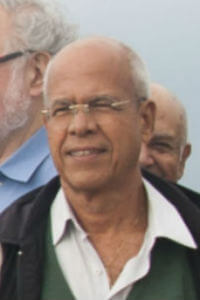
Universidade Federal da Paraiba, Departamento de Fisica, Brazil
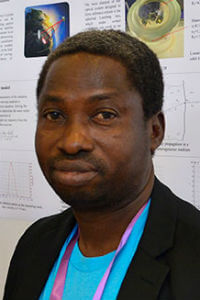
Delta State University, Faculty of Science, Physics Department, Nigeria
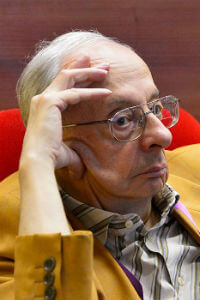
Symmetrion, Hungary
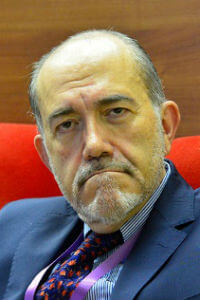
University of Sannio at Benevento, Italy
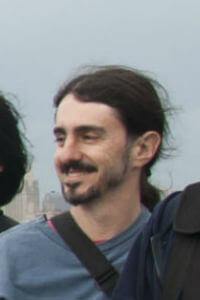
Rio Grande do Norte Federal University, Brazil
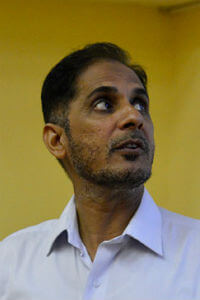
University of the Punjab, Pakistan
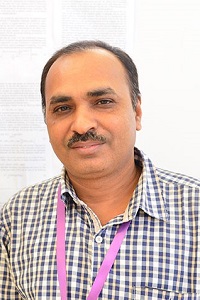
Indira Gandhi Institute of Technology, Sarang, India
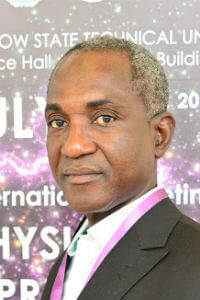
Nigerian Defence Academy, Faculty of Science, Department of Physics, Nigeria
Poster Papers
- Belonenko A., Testing the principle of equivalence at a very large distance from the Earth according to the data of the Radioastron space experiment.
- Greco F., Krasnyy I., The novel pushing gravity model and volcanic activity. Is alignment of planets with compact stars a possible cause of natural phenomena?
- Kopylov S., The hypothesis of evaporation of black holes in multidimensional spaces.
- Okunev V., An Elementary Analysis of the Simplest Relations of Relativity Theory.
- Okunev V., Kruglov A., Expansion of the Concept of the Term "Physical Vacuum".
- Poplawski N., Universe in a black hole with spin and torsion.
- Rudenko V., Krichevskiy D., Manucharyan G., Andrusenko S. Euro-Asian gravitational network: criteria of quality.
List of talks, including plenary and poster
- Agrawal Amarkumar, Mishra Bivudutta, Tripathy S.,Matter bounce scenario in an extended gravity.
BITS-Pilani, Hyderabad Campus, Indira Gandhi Institute of Technology, India
Akpojotor Godfrey, Ibeh Godwin,Can the Higgs radiation as the fundamental energy source be the path to a theory of everything? - Alexeyev Stanislav, Krichevskiy Daniil,Study of gravity models with nonlinear symmetry realization.
Sternberg Astronomical Institute, Moscow State University, Bauman University, Russia - Antonuyk Pavel, A new approach to the derivation of the law of universal gravitation from Kepler's laws .
Moscow State University, Russia - Avramenko Arkady,Pulsar: physical generalization of galactic time-space.
Pushchino Radio Astronomy Observatory, Russia - Babourova Olga, Frolov Boris, Khetseva Marina, Kushnir Dmitry,The structure of the curvature tensor of plane gravitational waves.
Moscow Automobile and Road Construction State Technical University, Moscow Pedagogical State University, Russia - Beesham Aroonkumar,Reconstruction of some cosmological models from the deceleration parameter.
University of Zululand, Mangosuthu University of Technology, South Africa - Behera Dipanjali,Anisotropic Cosmological Models in f(R,T) theory.
Indira Gandhi Institute of Technology, India - Belonenko Aleksei,Testing the principle of equivalence at a very large distance from the Earth according to the data of the Radioastron space experiment.
Sternberg Astronomical Institute, Moscow State University, Russia - Berezin Victor, Dokuchaev Vyacheslav, Eroshenko Yury, Smirnov Alexey,Cosmological solutions in Weyl geometry.
Institute for nuclear research, RAS, Russia - Bolshakova Katerina, Chervon Sergey,Effective one field model of TMS gravity with the Higgs potential.
Ulyanovsk State Pedagogical University, Bauman University, Kazan Federal University, Russia - Brandyshev Petr,Inflation in string-inspired supergravity with gauge shift symmetry.
Moscow Pedagogical State University, Russia - Bulyzhenkov Igor,Why did Russian cosmists rethink Newtonian gravity through the kinetic monism of continuous space-matter?
Moscow Institute of Physics and Technology, Russia - Burinskii Alexander,The Dirac electron consistent with proper gravitational and electromagnetic field of the Kerr-Newman solution.
Nuclear Safety Institute RAS, Russia - Chaadaev Alexander,Chervon Sergey,Exact spherically symmetric solutions in f (R, box R) gravity.
Ulyanovsk State Pedagogical University, Bauman University, Kazan Federal University, Russia - Chakraborty Saikat, MacDevette Kelly, Dunsby Peter,A model-independent approach to dynamical system analysis in cosmology.
Yangzhou University, University of Cape Town, China, South Africa - Chernitskii Alexander,Gravitation in theory of space-time film.
St. Petersburg State Chemical Pharmaceutical University, Russia - Chervon Sergey, Fomin Igor,Chiral cosmological model of f(R, Box R) gravity.
Bauman University, Ulyanovsk State Pedagogical University, Kazan Federal University, Russia - Dokuchaev Vyacheslav, Nazarova Natalia O.,Imaging of black holes.
Institute for nuclear research, RAS, Scuola Internazionale Superiore di Studi Avanzat, Russia, Italy - Dorofeev Vyacheslav,Gravity on a nonassociative algebra.
Saint Petersburg State University of Economics, Russia - Dubey Rajesh Kumar, HubbleвАЩs Constant with Signals from GW170817 Standard Siren and GW190814 Dark Siren.
Lovely Professional University, India - Emtsova Elena, Krssak M., Petrov A.N., Toporensky A.V.,On the Schwarzschild Solution in Teleparallel Equivalent of General Relativity.
Sternberg Astronomical institute, Moscow State University, Chulalongkorn University, Russia, Thailand - Eroshenko Yury,Primordial black holes in the early universe.
Institute for nuclear research, RAS, Russia - Fil'chenkov Michael, Laptev Yury,Vacuum Polarization and Particle Creation for Two-Horizon Metrics.
Peoples' Friendship University, Russia - Fisenko Stanislav,Analogy of star formation with the formation of plasma of multicharged ions in pulsed high current discharges.
Moscow State Linguistic University, Russia - Fomin Igor, Chervon Sergey,Relic gravitational waves in cosmological models based on the modified gravity theories.
Bauman University, Ulyanovsk State Pedagogical University, Kazan Federal University, Russia - Frolov Boris, Babourova Olga,Decrease of the effective cosmological constant in the Poincaré-gauge theory of gravity with a scalar field.
Moscow Pedagogical State University, Moscow Automobile and Road Construction State Technical University, Russia - Garat Alcides,A new symmetry for the imperfect fluid in relativistic astrophysics.
Universidad de la Republica, Uruguay - García-Farieta J., Probing gravity with redshift-space distortions: effects of tracer bias and sample selection.
Center for Theoretical Physics Poland, Poland - Giri Priyanka, Locking of marginally stable cavities with TCS optics.
INFN Pisa and University of Paris,Italy - Gladyshev Vladimir, Sharandin E.A., Skrabatun A.V.,Generation of the third optical harmonic in air under femtosecond infrared repetitively pulsed excitation.
Bauman University, Russia - Greco Filippo, Krasnyy Ivan, The novel pushing gravity model and volcanic activity. Is alignment of planets with compact stars a possible cause of natural phenomena?
Istituto Nazionale di Geofisica e Vulcanologia, The State Research Navigation-Hydrographic Institute, Italy - Gutierrez-Pineres Antonio C,Newman-Janis Ansatz for rotating wormholes.
Universidad Industrial de Santander, Colombia - Ibeh Godwin, Akpojotor Godfrey,Current Status of the Newtonian, Inflationary and Cyclic Models of the Early Universe.
Nigerian Defense Academy, Delta State University, Nigeria - Il'ichov Leonid, Rostom A.M., Shepelin A.V., Tomilin V.A.,Multiworld Motives by Closed Timelike Curves.
Novosibirsk State University, SB RAS, Russia - Ivanova Inna,Null shells and double layers in Quadratic Gravity.
Institute for Nuclear Research, RAS, Russia - Izmailov George,An uniform model for Dark Matter and Dark Energy.
Moscow Aviation Institute, Russia - Izmailov George, Ozolin Vladimir,Precision Clock Network As A Gravitational Space-Based Antennas.
Moscow Aviation Institute, Russia - Kadam Siddheshwar, Mishra Bivudutta,Late Time Cosmic Acceleration Model In F(T,B) Gravity.
BITS-Pilani, Hyderabad Campus, India - Kamalov Timur, What are Non-local Variables?
Moscow Institute of Physics and Technology, Russia - Karimov Ramis, Izmailov R.N., Nandi K.K., Ivanova A.A. ,Shapiro delay in Kerr-Sen black hole.
Bashkir State Pedagogical University n.a. M. Akmulla, University of North Bengal, Russia, India - Kassandrov Vladimir, Markova Nina,Algebrodynamics: geometry and kinematics induced by quaternionic and twistor structures.
Peoples' Friendship University, Russia - Khamis Hassan Maher, Volkova O.A., Kamalov T.F., Phenomenon of dark matter as result of non-calculation additional derivatives.
Assiut University, Moscow State Regional University, Moscow Institute of Physics and Technology , Egypt, Russia - Kopylov Sergey,The hypothesis of evaporation of black holes in multidimensional spaces.
Moscow Polytechnic University, Russia - Koshelev Nikolay,Extended f (R) theories with kinetic curvature scalar in the weak field regime.
Ulyanovsk State Pedagogical University, Russia - Krysanov Vladimir,Noise Factor and Reception Bandwidth in Optoacoustical GW Antenna.
Institute for nuclear research, RAS, Russia - Le Duc Thong,A study of space-time variation of the gravitational constant using high-resolution quasar spectra.
Institute for Computational Science, Vietnam - Lebed Andrei,Breakdown of the Equivalence Principle for a composite quantum body.
The University of Arizona, USA - Levin Sergey,Cosmological distance scale: discordances and rank inversion .
Moscow Institute for expertise and tests, Russia - Li Benliang, Zhang Hailiang, Shum Perry,The Underlying Mechanisms of Time Dilation Effect in Curved Space-Time.
Southwest jiaotong university, Nanyang Technological University, China, Singapore - Lohakare Santosh, Mishra Bivudutta, Dynamical behaviour of accelerating cosmological model F (R,G) gravity.
BITS Pilani, Hyderabad, India - Litvinov D., Pilipenko S., Testing the Einstein equivalence principle with two Earth-orbiting clocks.
Bauman Moscow State Technical University, Russia - Makarov A., Luneva L., The problem of the existence of gravitational waves in classical physics.
Bauman University, Russia - Mayburov Mayburov,Search for periodic variations of nucleus decay parameters.
Lebedev Inst. of Physics RAS, Russia - Meierovich Boris,Gravitational Radius in view of Existence and Uniqueness Theorem.
P.L.Kapitza Institute for Physical Problems, Russia - Milyukov Vadim,The space-borne gravitational wave detector TianQin: Current progress on science and technology.
Lomonoscov Moscow State University, Russia - Mishra Bivudutta,Little Rip Cosmology in Extended Gravity.
BITS-Pilani, Hyderabad campus, India - Monakhov Vadim, Kozhedub Alexei,Spinor vacuum and C, P, T inversions.
Saint-Petersburg State University, Russia
Moscow State Regional University, Russia
- Okunev Viacheslav,An Elementary Analysis of the Simplest Relations of Relativity Theory.
Bauman University, Russia - Okunev Viacheslav, Kruglov Alexander, Expansion of the Concept of the Term "Physical Vacuum".
Bauman University, Russia - Olkhov Oleg,Theory of relativity and geometrisation of quantum mechanics.
Institute of Chemical Physics, RAS, Russia - Pankaj Singh,Cosmology phenomeon.
Delhi University, India - Pati Laxmipriya, Mishra Bivudutta,Dynamics of f(Q,T) gravity with variable deceleration parameter.
BITS-Pilani, Hyderabad Campus, India - Pavlov Yuri, Grib A.A.,Some properties of nonsynchronous reference frames in cosmology.
Institute of Problems in Mechanical Engineering of RAS, The Herzen University, Russia - Petrov Alexander,The field-theoretical methods in Lovelock gravity.
Sternberg Astronomical Institute, Moscow State University, Russia - Petrov Vladimir,Space- Time Scales in High Energy Collisions.
Logunov Institute for High Energy Physics NRC, Kurchatov Institute, Russia - Petrova Ludmila,The connection of the field theory equations with the equations of mathematical physics. The nature and origins of dark matter and dark energy.
Moscow State University, Russia - Pinto Innocenzo M., Estimating the chirp-mass and eccentricity of coalescing binary systems from time-frequency analysis of their gravitational wave emission.
University of Sannio at Benevento, Italy - Pinto Innocenzo M., Fully optimized ternary coatings for next generation interferometric cryogenic detectors of gravitational waves.
University of Sannio at Benevento, Italy - Pokrovsky Yury,F(R,G) Gravity with Maximal Noether Symmetry.
National Research Center вАЬKurchatov InstituteвАЭ, Russia - Poplawski Nikodem, Universe in a black hole with spin and torsion.
University of New Haven, USA - Pustovoit V., Gladyshev V., Kauts V., Morozov A., Nikolaev P., Fomin I., Sharandin E., Kayutenko A., High frequency gravitational waves: generation, detection.
Bauman Moscow State Technical University, Russia. - Ray Pratik Premadarshi,Stability analysis of two-fluid dark energy models.
Vellore Institute of Tecnology- Andhra Pradesh University, India - Romero Carlos,The Invariant Weyl Theory of Gravity.
Federal University of Paraíba, Brasil - Rowlands Peter, An Approach towards Grand Unification.
University of Liverpool, United Kingdom - Rudenko Valentin, Krichevskiy Daniil, Manucharyan Gevorg, Andrusenko Svetlana,Euro-Asian gravitational network: criteria of quality.
Sternberg Astronomical Institute, Moscow State University, Bauman University, Russia - Sahoo Pradyumn Kumar, Wormhole geometry in a modified symmetric teleparallel gravity.
BITS-Pilani, Hyderabad campus, India - Sharif Muhammad, Noether Symmetry Technique in Modified Gravity.
University of the Punjab, Pakistan - Shishanin Andrei,Examples of Calabi-Yau Threefolds with small Hodge numbers.
Bauman University, Russia - Simran Kaur,Matter Creation Cosmology.
Delhi Technological University, India - Siparov Sergey,Completely geometrical theory.
State University of Civil Aviation, Russia - Starobinsky Alexei,Evolution of the mixed R^2-Higgs model during and after inflation.
Landau Institute for Theoretical Physics RAS, Russia - Timofeev Vladimir,On the force caused by a null Einstein-Maxwell field with the plane symmetry.
Saint Petersburg State University of Civil Aviation, Russia
Sternberg Astronomical Institute, Moscow State University, Russia
- Trell Erik, From Photon to Oganesson: Lie Algebra Realization of the Standard Model Extending over the Periodic Table.
Link√ґping University, Sweden - Tripathy Sunil Kumar,Unified Dark Fluid Models in Brans-Dicke Theory.
Indira Gandhi Institute of Technology, India - Vargashkin Vladimir,Statistical analysis of random error of satellite measurements of anisotropy of CMB temperature in temporally and frequency areas.
Bauman University, Orel State University named after I.S.Turgenev, Russia - Vertogradov Vitalii,Forces in Schwarzschild, Vaidya and generalized Vaidya spacetimes.
Herzen State Pedagogical University of Russia, Russia - Yurasov Nicolay,About spin of a massive particle in the Standard Model.
Bauman University, Russia - Yusupova Rozaliya, Izmailov R.,Properties of thin accretion disks in the space-time of a non-singular charged black hole.
Institute of Molecule and Crystal Physics - Subdivision of the Ufa Federal Research Centre of the Russian Academy of Sciences, Bashkir State Pedagogical University named after M. Akmullah, Russia - Zaslavskii Oleg, Toporensky Alexey,Flow and peculiar velocities in the background of spherically symmetric black holes.
Kharkov V. N. Karazin National University, Sternberg Astronomical Institute, Moscow State University, Ukraine, Russia - Zhuravlev Victor,The principle of materiality of space and the theory of fundamental fields.
Ulyanovsk State University, Samara National Research University, Russia - Zhuravlev Victor, Chervon Sergey,Method of multiscale expansions in problems of cosmological inflation.
Ulianovsk State University, Samara National Research University, Bauman University, Kazan Federal University, Ulyanovsk State Pedagogical University, Russia - Zloshchastiev Konstantin,Superfluids in astrophysics and all that jazz.
Durban University of Technology, South Africa - Zubair Muhammad,Evolution of Tsallis Holographic Dark Energy in Minimally Coupled Gravity.
COMSATS University Islamabad, Lahore Campus, Pakistan
Nigerian Defense Academy, Delta State University, Nigeria
–Рbstracts
BMSTU
The history of our institution, the Bauman MHTS (Moscow Higher Technical School), or presently the Bauman MSTU (Moscow State Technical University) dates back to 1830, when Emperor Nicholas I confirmed the "statute of the industrial school" to open in Moscow. Russia's developing industry needed skilled labor in many trades. So, the aim of the new school was to train skillful artisans with a solid theoretical background to improve and spread skills in various trades all over Russia. The training personnel of the school comprised graduates of the Moscow University who specialized in mathematics, mechanics, physics and chemistry. By 1868 the academic standards of the school were so high that it was reorganized into a special institution of higher learning (Imperial Moscow Technical School or IMTS). Its major task now was to train mechanics in construction, engineering and manufacturing. The IMTS was financially supported by the Government and industrialists. Its management was democratic. Its teaching staff boasted of many talented scientists who maintained contacts with the West. All these circumstances helped the School to achieve outstanding successes in manufacturing processes and practices in the chemical, food and textile industries, metal and wood processing, and structural mechanics. During the 1876 Exhibition in Philadelphia the practically-minded Americans highly appreciated and admired the methods used by the School, recognizing them as an original "Russian system" of training engineers. In 1876, Dr. Wrinkle, President of the Boston Institute of Technology, writes to V.K.Dela-Vos, Director of the Imperial Moscow Technical School that Russia is a recognized leader in handling the important problems of engineering education, and that no other system will hence be used in America. IMTS system of handicraft education of engineers was recognized all over the world. ¬ЂRussian method¬ї became especially well-known after Vienna World Exhibition (1873) where it was awarded Big Gold Medal. IMTS was recognized the best machine-building education institution of Russia and joined the ranks of the world leading polytechnic schools. A lot of outstanding scientists taught in IMTS, such as D. Mendeleev, N. Jukovsky, P. Chebychev, S. Chaplygin, A. Yershov, D. Sovetkin, F. Dmitriev, A. Letnikov, A. Gavrilenko.
Thus, the Moscow Higher Technical School joined the ranks of "leading polytechnical schools in Europe".
The late 19th century witnessed quickening progress in electrical engineering, aeromechanics, and the power engineering industry.
In 1918, the MHTS organized several research institutes, including TSAGI (Central Aerodynamics and Hydrodynamics Institute), which eventually developed into independent structures, separating from their parent. The quick industrial expansion of the country called for new training facilities on other fields of science and technology. In 1930, the MHTS began to branch out into many new institutions of higher learning: the Moscow Aviation Institute, the Moscow Power Engineering Institute, the Military Chemical Academy, the Textile Institute, and the Moscow Civil Engineering Institute.
The MHTS continued to specialize in training engineers for the machine-building and instrumentation industries.
In 1938, the MHTS opened new departments with a defense profile: armoured vehicles and tanks, artillery, and ammunition. In 1948, a department of rocketry was added.
The following famous scientists and specialists have graduated our school: Academician A.N. Tupolev, S.P. Korolev, and many other aircraft and rocket designers and developers; Academician N.A. Dollezhal, chief designer of atomic piles; Academician A.I.Tselikov, chief designer of metallurgical engineering; Academician S.A.Lebedev, chief designer of computers.
Our School is distinguished for high-level scientific and engineering training of students, extensive relations with industries, good traditions, and high professional and moral requirements which both the professors and students feel obliged to meet and maintain.
In 1989, the MHTS was conferred a new name: the Bauman Moscow State Technical University (Bauman MSTU).
Pafnuty Lvovich Chebyshev (16 May 1821 вАУ 8 December 1894) was a Russian mathematician. Chebyshev is known for his work in the fields of probability, statistics, mechanics, and number theory. The Chebyshev inequality is used to prove the Weak Law of Large Numbers. Chebyshev is also known for the Chebyshev polynomials.
Dmitri Ivanovich Mendeleev(8 February 1834 вАУ 2 February 1907) was a Russian chemist and inventor. He formulated the Periodic Law, created his own version of the periodic table of elements, and used it to correct the properties of some already discovered elements and also to predict the properties of eight elements yet to be discovered.
Nikolay Yegorovich Zhukovsky (17 January 1847вАУ 17 March 1921) was a Russian scientist and a founding father of modern aero- and hydrodynamics. Whereas contemporary scientists scoffed at the idea of human flight, Zhukovsky was the first to undertake the study of airflow.
Sergei Pavlovich Korolev (12 January 1907 вАУ 14 January 1966) was the lead Soviet rocket engineer and spacecraft designer in the Space Race between the United States and the Soviet Union during the 1950s and 1960s. He is considered by many as the father of practical astronautics.
Vladimir Nikolayevich Chelomey (30 June 1914 вАУ 8 December 1984) was a Soviet mechanics scientist, aviation and missile engineer. He invented the very first Soviet pulse jet engine and was responsible for the development of the world's first anti-ship cruise missiles and ICBM complexes.
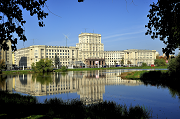
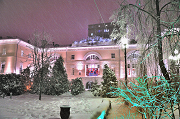
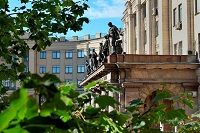
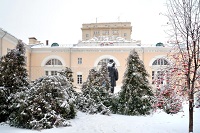
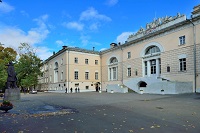
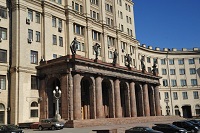
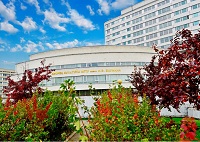
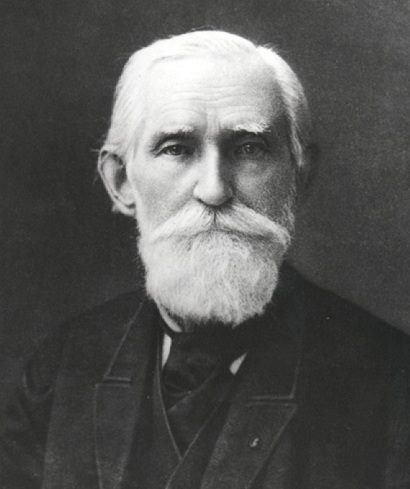

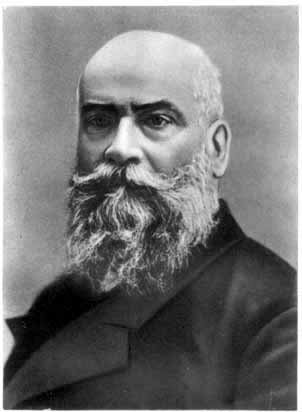
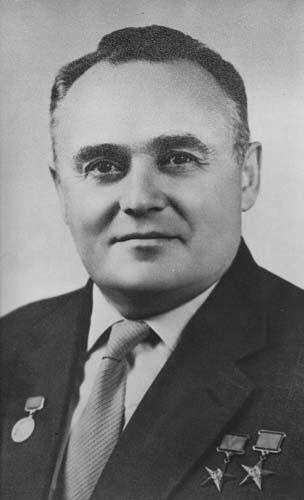
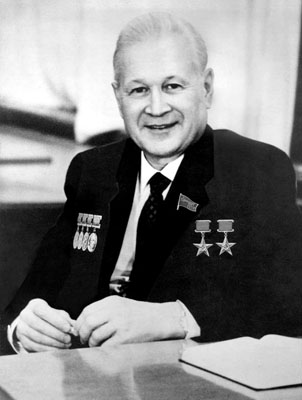
Laboratory Building of BMSTU
The Laboratory Building of BMSTU was opened in 2004.
At the opening ceremony Minister of Education Vladimir Filippov called it "a symbol of the RussiaвАЩs rebirth".
The total area of the 11-storey building is over 80 thousand sq. meters (equivalent of 11 football fields). 5 thousand students of all departments can have classes there simultaneously.
The building houses 100 lecture halls, 20 computer classrooms, 19 elevators, a library, which can store nearly 1 million books, a reading room for 700 visitors, a concert hall having almost 1,200 seats and a conference hall for 130 seats.
The Laboratory Building stands on the bank of the River Yauza and its similarity with a ship's hull explains its nickname, that is "an icebreaker".
The Fundamental Science Scientific and Training Complex (visit http://fn.bmstu.ru for the Russian version and http://fn.bmstu.ru/index.php/en - for the English version) is located on the 4th, 6th, 8th, 9th and 10th floors of the Laboratory Building as well as in the main building on 2nd Baumanskaya street.
The PIRT Conference has been held in the Conference Hall of the Laboratory Building since 2005.
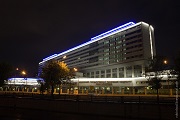
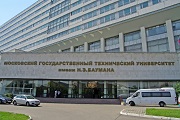
Department of Physics
Department of Physics of Bauman Moscow State Technical University (BMSTU) has worked since 1832, when Physical Study to demonstrate physical phenomena during lectures for students was created at the Craft Institution of Moscow Training House.
On the first June in 1968 the Craft Institution was reformed into Emperor Moscow Technical Specialized School and the Physical Study got a new official status as Department of General and Applied Physics. Professor A.S.Vladimirskii, who had graduated from Moscow University, headed the Department.
The brightest historical moments of the Department were linked with names of professor V.S.Shchegolyaev (the head of the Department since 1886 till 1912) and academician P.P.Lazarev (the head of the Department since 1912 till 1925).
At different times a number of remarkable scientists have worked at the Department: academician, president of USSR Science Academy S.I.Vavilov, corresponding-members of USSR Science Academy K.A.Krug and A.S.Predvoditelev, professors A.B.Mlodzievskii, A.K.Trapeznikov, A.V.Shpol'skii, N.E.Uspenskii, V.D.Zernov, K.A.Putilov.
At present the staff of the Department of Physics consists of 14 professors, 47 readers, 8 senior teachers and 7 professors, 15 readers, 7 senior teachers occupy private positions.
The main scientific directions of the Department of Physics are
- Electro-hydrodynamics (Prof. I.N. Aliev)
- Nonreversible process research in natural media. Theory of precise measurements. (Prof. A.N. Morozov, amor59@mail.ru)
- Electrodynamics of moving media; experimental tests of the relativity theory and electrodynamics (Prof. V.O. Gladyshev, dekan-fn@mail.ru)
- Applied electrodynamics and radio-physics (Prof. O.S. Litvinov)
- Theory of strength and destruction for solid bodies (Prof. V.N. Bovenko, (willian-2304@mail.ru)
- Physical processes modeling in continuous media (Prof., Ph.D., the Winner of the State Prize of the USSR A.M. Makarov)
- Physics of high-temperature processes (Prof. V.V. Gorev, kafedra-fiziki@mail.ru)
- Methods of Computational Physics (Prof. M.F. Ivanov, ivanov_mf@mail.ru)
- Solid State Physics (Prof. B.E. Vintaykin)
- Laser Physics (Prof. N.F. Bunkin, nbunkin@kapella.gpi.ru)
- Semiconductor microwave technology (Prof. S.P. Babenko, babenkosvetlana@mail.ru)
- Electrodynamics of inhomogeneous media (Prof. S.M. Korotaev, korotaev@igemi.troitsk.ru)
- Terahertz technology, spectroscopy (Prof. S.O. Yurchenko, st.yurchenko@mail.ru)
- High energy astrophysics (Prof. V.L.Kauts, kauts@asc.rssi.ru)
- Early Universe models and an exact solutions of the Einstein equations (Prof. I.V. Fomin, ingvor@inbox.ru)
There is a laboratory for student researching at the Department of Physics.
Since 2001 the Department of Physics trains on the courses of bachelor and master degrees in Engineering Physics.
More detailed information can be obtained from the Head of BMSTU Department of Physics - A.N.Morozov (amor@mx.bmstu.ru).
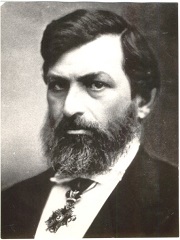


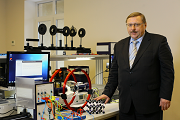
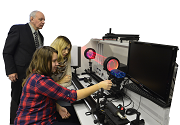
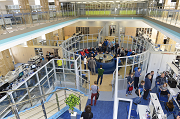
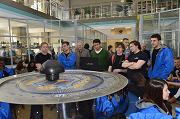
History of PIRT
The PIRT Conference is a event held in September since 1988 at Imperial College in London and since 2003 at Bauman University in Moscow.
| Year | Imperial College, London, UK |
Bauman University, Moscow, Russia |
| 1988 | PIRT I | - |
| 1990 | PIRT II | - |
| 1992 | PIRT III | - |
| 1994 | PIRT IV | - |
| 1996, Sept. 6-9 | PIRT V | - |
| 1998, Sept. 11-14 | PIRT VI | - |
| 2000, Sept. 15-18 | PIRT VII | - |
| 2002, Sept. 6-9 | PIRT VIII | - |
| 2003, 30.06-03.07 | - | PIRT-2003 (XI) |
| 2004, Sept. 3-6 | PIRT IX | - |
| 2005, July 4-7 | - | PIRT-2005 (XII) |
| 2006, Sept. 8-11 | PIRT X | - |
| 2007, July 5-7 | - | PIRT-2007 (XIII) |
| 2008, Sept.12-15 | PIRT XIV | - |
| 2009, July 6-9 | - | PIRT-2009 (XV) |
| 2010, Sept. 10-13 | PIRT XVI | - |
| 2011, July 4-7 | - | PIRT-2011 (XVII) |
| 2013, July 1-4 | - | PIRT-2013 (XVIII) |
| 2015, 29.06-02.07 | - | PIRT-2015 (XIX) |
| 2017, July 3-6 | - | PIRT-2017 (XX) |
| 2019, July 1-5 | - | PIRT-2019 (XXI) |
Initially the conference aimed to allow free communication for foreign scientists with scientists from the former Soviet Union. It was planned to hold a conference in Kazan University (Russia), where one of the founders of non-Euclidean geometry N.I. Lobachevsky used to work.
In 1988 the first PIRT conference was organized at Imperial College (London), where it is held every two years. The conference is notable for the freedom of scientific views, large reports (up to 40 min), Proceedings published and the participation of Russian scientists.
In 2003 the first PIRT conference was held at BMSTU in Moscow. The event was a success, and it was decided to hold a conference in Moscow every two years. The PIRT Conference was also held in Calcutta (India) and Budapest (Hungary).
The PIRT Conference features talks on multi-dimensional theory of gravity, gravitational-wave experiments, dark matter, cosmic microwave background, space anisotropy search, tests of the theory of relativity and electrodynamics.

PIRT-2007
PIRT-2009
Transport to BMSTU
How you can get to BMSTU from International Airport "Sheremetyevo-II" to metro station ¬ЂBaumanskaya¬ї (three variants):
- Take bus number 817 to the underground station ¬ЂPlanernaya¬ї (about 45 min., 21.5 km). Then go to the underground station ¬ЂTverskaya¬ї, then go to the underground station ¬ЂTeatral'naya¬ї, and go over to the underground station ¬ЂPloshchad' Revolyutsii¬ї, then go to the underground station ¬ЂBaumanskaya¬ї.
- Take bus number 851 to the underground station ¬ЂRechnoi Vokzal¬ї (about 43 min., 21.7 km). Then go to the underground station ¬ЂTeatral'naya¬ї, (about 21 minutes) and go over to the underground station ¬ЂPloshchad' Revolyutsii¬ї, then go to the underground station ¬ЂBaumanskaya¬ї.
- High-speed trains вАЬAeroexpressвАЭ depart from Sheremetyevo Airport to Belorussky Railway station every 20вАУ30 minutes. Travel time is 30вАУ40 minutes to the underground station ¬ЂBeloruskaiya¬ї. Then go to the underground station ¬ЂTeatral'naya¬ї, (about 7 minutes) and go over to the underground station ¬ЂPloshchad' Revolyutsii¬ї, then go to the underground st
From station ¬ЂBaumanskaya¬ї to BMSTU.
From station ¬ЂBaumanskaya¬ї walk to the Rubtsovskaya nab., 2/18 (about 15 minutes).
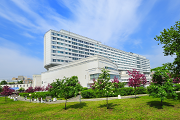
Accommodation
As BMSTU hasn't got a special hotel for guests, you can book a room by yourself in the hotel of Izmailovskii Tourist Complex.
The hotel is nearby the underground station "Partizanskaya" (3 stations from the underground station "Baumanskaya").
Address: 105187, Moscow, Izmailovskoye Shosse, 71, Bldg. 3V, "Vega" Complex.
(All information on http://www.hotel-vega.ru/)
Registration Fee
Due to restrictions on entry to the Russian Federation due to covid-19, all conference participants from outside Russia are invited to make a remote presentation
The registration fee for remote (online) participation in the conference is 8900 Rubles.
Financial support is provided for scientists from developing countries, for students and post-graduate students.

Auditorium
The Moscow PIRT-2021 will be held in the Study Laboratory Building of BMSTU, situated at the bank of river Yauza. Rubtsovskaya naberezhnaya 2/18.
The opening of the conference will take place in the Great Hall of the House of Culture of the Bauman University, located in the Study Laboratory Building. The conference will be held using modern multimedia technology, which allows you to make a presentation both remotely and in person, in compliance with sanitary and epidemiological requirements. All reports are accompanied by simultaneous translation.
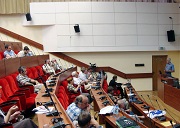
Permission, visa
To prepare the official Letter for Invitation for Russian Embassy in the other countries we need the following information from participants:
- first name, second name (or patronymic name), and surname;
- copy of passport (by e-mail or by fax);
- place of work (Institution, University, etc.). (If you haven't got any, please write down "housekeeper");
- address of work (Institution, University, etc.);
- position;
- dates of visiting Russia (arrival and departure);
- cities and towns to be visited (Moscow and others);
- date of birth;
- place of birth;
- dates of issue and expire of passport;
- city visa.
It is needed to have medical insurance when you visit Russia.
Invitation
- We will send to all participants of the conference letters of invitation to report by E-mail.
- If you need the letter will be set by mail or fax.
- For foreign participants Organizing Committee will preparethe official letters of invitation for the Russian Embassy.
Cultural program
An excursion to the Grand Kremlin Palace and the the Palace of the Facets is planned. The excursion program will be formed later, taking into account the restrictions on COVID-19.
The Grand Kremlin Palace was built from 1837 to 1849 in Moscow, Russia on the site of the estate of the Grand Princes, which had been established in the 14th century on Borovitsky Hill. Designed by a team of architects under the management of Konstantin Thon, it was intended to emphasise the greatness of Russian autocracy. Konstantin Thon was also the architect of the Kremlin Armoury and the Cathedral of Christ the Savior.
The Grand Kremlin Palace was formerly the tsar's Moscow residence. Its construction involved the demolition of the previous Baroque palace on the site, designed by Rastrelli, and the Church of St. John the Baptist, constructed to a design by Aloisio the New in place of the first church ever built in Moscow.
Thon's palace is 125 metres long, 47 metres high, and has a total area of about 25,000 square metres. It includes the earlier Terem Palace, nine churches from the 14th, 16th, and 17th centuries, the Holy Vestibule, and over 700 rooms. The buildings of the Palace form a rectangle with an inner courtyard. The building appears to be three stories, but is actually two. The upper floor has two sets of windows. The west building of the Palace held state reception halls and the imperial family's private chambers.
Its five reception halls (Georgievsky, Vladimirsky, Aleksandrovsky, Andreyevsky, and Ekaterininsky) are named for orders of the Russian Empire: the Orders of St. George, Vladimir, Alexander, Andrew, and Catherine.
Meal
- Coffee breaks are planned between the reports.
- The time for coffee breaks and for lunch will be in programe of the Meeting.
- The Organizing Committee is planning to give a dinner party for participants.
Translation (Interpretation)
- English is the working language at the conference.
- The Organizing Committee can arrange simultaneous translation for participants during some parts of the Conference (the opening and the closing of the Conference, and reports) and excursions.
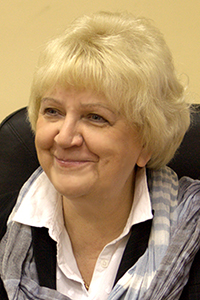
Moscow PIRT Proceedings
According to the results of the conference, some papers will be selected for publishing in a separate issue of the Journal of Physics: Conference Series (JPCS), which is included in Scopus and Web of Science database.
The publication of papers is paid. The cost of one paper now is GBP 45 per paper.
Proceedings licence hosted at:
http://conferenceseries.iop.org/content/quick_links/IOP_Proceedings_Licence.
The articles should be thoroughly revised and put into shape according to requirements.








Preferred format for abstracts and papers
Abstracts should be prepared in accordance with the example of abstracts.
Example of abstract 2021: the_example_of_abstract_en-2021
The format of files of papers is *.docx ( *.doc) or TEX (you also should send the hard copy in PDF format).
An article should be formed as one file.
- The paper size is European A4.
- Margins are 4cm (top), 2.5cm (left and right) and 2.7cm (bottom).
- The paper includes the authorвАЩs name and affiliation (full address including country).
- The paper includes the abstract.
- There are no page numbers, or headers and footers, within the paper.
- The PDF is free of formatting errors (e.g. corrupt equations, missing or low-resolution figures), since conversion from Word to PDF can introduce formatting errors.
- Text is single-spaced, not double spaced.
- The PDF file is editable and not password protected.
- All pages are portrait (landscape pages should be rotated).
- Reference lists are checked for accuracy. References can only be linked via Crossref if they are correct and complete.
- Figures are placed within the text, not collected at the end of the document.
- A thorough proofread is conducted to check the standard of English and ensure the wording is clear and concise.
Papers should be prepared in accordance with the Guidelines and Templates
Guidelines and Templates for Papers in MS Word: WordGuidelines.zip
Guidelines and Templates for Papers in TeX: LaTeXTemplates.zip
Instructions for Reference List: References.pdf
For all questions related to the conference PIRT-2021, please contact:
dekan-fn@mail.ru
Registration
Please fill in all report co-authors.
пїњ
Contacts
For all questions related to the conference PIRT-2021, please contact:
dekan-fn@mail.ru.
Scientists Secretary PIRT-2021:
Dr. Tyannikova Nina Dmitrievna (Bauman MSTU, Russia).

